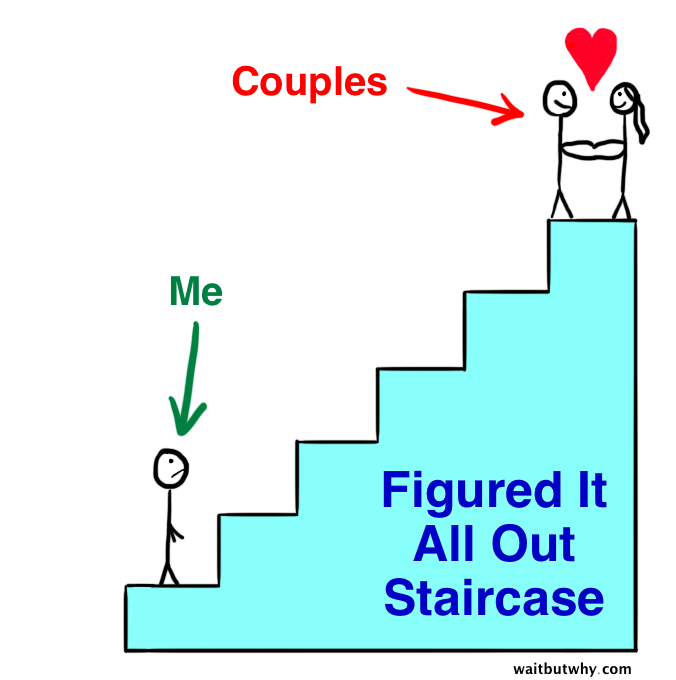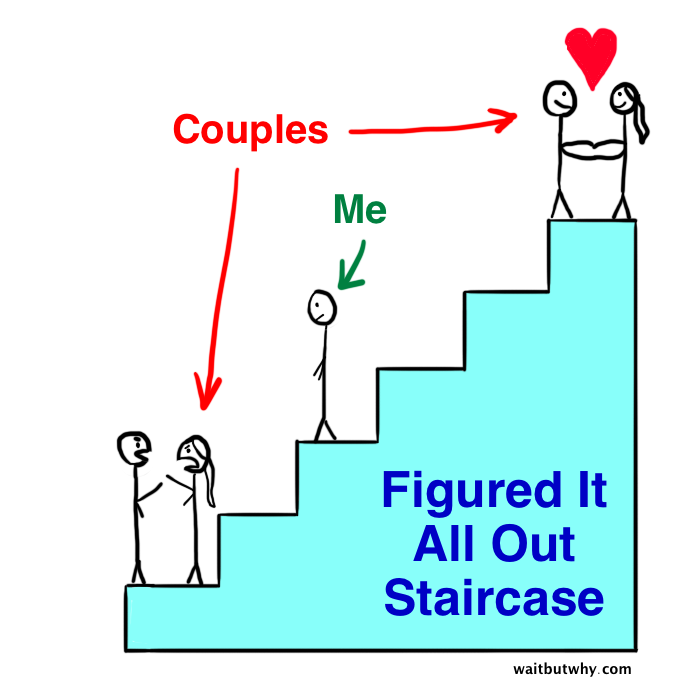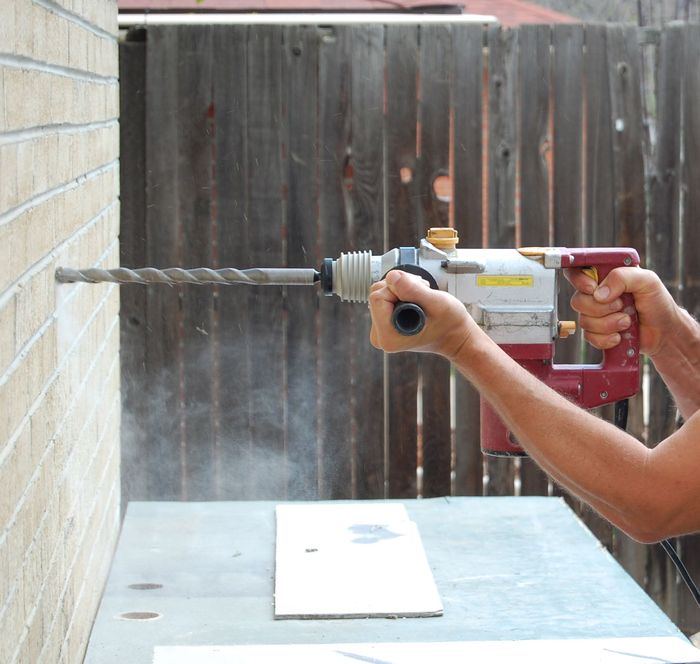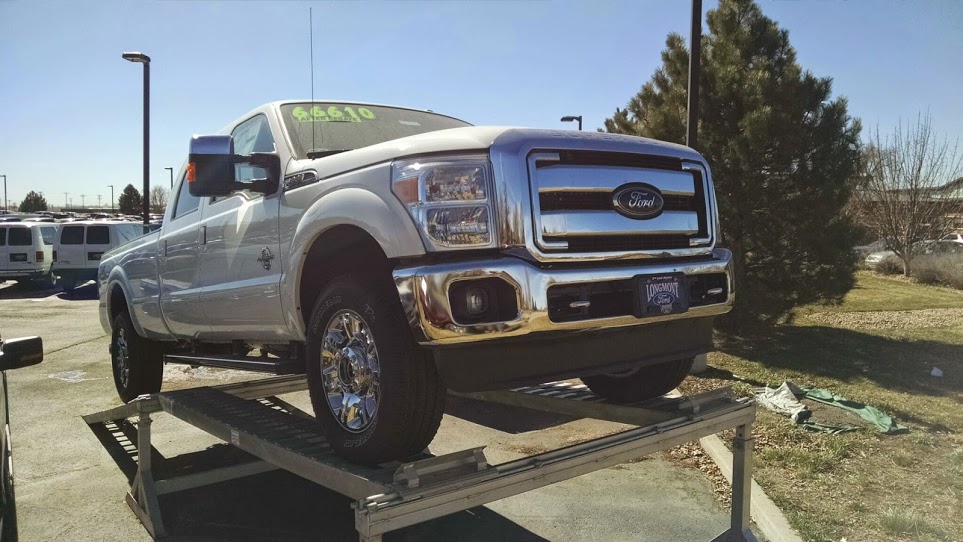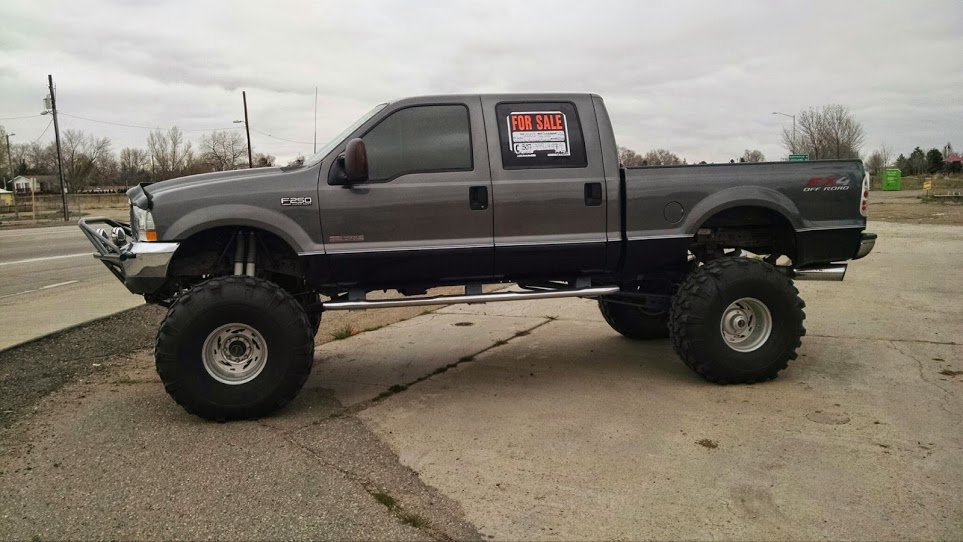
Shared posts
How to Pick Your Life Partner – Part 1
Rory GawlerSeems accurate.
To a frustrated single person, life can often feel like this:
And at first glance, research seems to back this up, suggesting that married people are on average happier than single people and much happier than divorced people.1 But a closer analysis reveals that if you split up “married people” into two groups based on marriage quality, “people in self-assessed poor marriages are fairly miserable, and much less happy than unmarried people, and people in self-assessed good marriages are even more happy than the literature reports”.2 In other words, here’s what’s happening in reality:
Dissatisfied single people should actually consider themselves in a neutral, fairly hopeful position, compared to what their situation could be. A single person who would like to find a great relationship is one step away from it, with their to-do list reading, “1) Find a great relationship.” People in unhappy relationships, on the other hand, are three leaps away, with a to-do list of “1) Go through a soul-crushing break-up. 2) Emotionally recover. 3) Find a great relationship.” Not as bad when you look at it that way, right?
All the research on how vastly happiness varies between happy and unhappy marriages makes perfect sense, of course. It’s your life partner.
Thinking about how overwhelmingly important it is to pick the right life partner is like thinking about how huge the universe really is or how terrifying death really is—it’s too intense to internalize the reality of it, so we just don’t think about it that hard and remain in slight denial about the magnitude of the situation.
But unlike death and the universe’s size, picking a life partner is fully in your control, so it’s critical to make yourself entirely clear on how big a deal the decision really is and to thoroughly analyze the most important factors in making it.
So how big a deal is it?
Well, start by subtracting your age from 90. If you live a long life, that’s about the number of years you’re going to spend with your current or future life partner, give or take a few.
I’m pretty sure no one over 80 reads Wait But Why, so no matter who you are, that’s a lot of time—and almost the entirety of the rest of your one existence.
(Sure, people get divorced, but you don’t think you will. A recent study shows that 86% of young people assume their current or future marriage will be forever, and I doubt older people feel much differently. So we’ll proceed under that assumption.)
And when you choose a life partner, you’re choosing a lot of things, including your parenting partner and someone who will deeply influence your children, your eating companion for about 20,000 meals, your travel companion for about 100 vacations, your primary leisure time and retirement friend, your career therapist, and someone whose day you’ll hear about 18,000 times.
Intense shit.
So given that this is by far the most important thing in life to get right, how is it possible that so many good, smart, otherwise-logical people end up choosing a life partnership that leaves them dissatisfied and unhappy?
Well as it turns out, there are a bunch of factors working against us:
People tend to be bad at knowing what they want from a relationship
Studies have shown people to be generally bad, when single, at predicting what later turn out to be their actual relationship preferences. One study found that speed daters questioned about their relationship preferences usually prove themselves wrong just minutes later with what they show to prefer in the actual event.4
This shouldn’t be a surprise—in life, you usually don’t get good at something until you’ve done it a bunch of times. Unfortunately, not many people have a chance to be in more than a few, if any, serious relationships before they make their big decision. There’s just not enough time. And given that a person’s partnership persona and relationship needs are often quite different from the way they are as a single person, it’s hard as a single person to really know what you want or need from a relationship.
Society has it all wrong and gives us terrible advice
→ Society encourages us to stay uneducated and let romance be our guide.
If you’re running a business, conventional wisdom states that you’re a much more effective business owner if you study business in school, create well thought-out business plans, and analyze your business’s performance diligently. This is logical, because that’s the way you proceed when you want to do something well and minimize mistakes.
But if someone went to school to learn about how to pick a life partner and take part in a healthy relationship, if they charted out a detailed plan of action to find one, and if they kept their progress organized rigorously in a spreadsheet, society says they’re A) an over-rational robot, B) way too concerned about this, and C) a huge weirdo.
No, when it comes to dating, society frowns upon thinking too much about it, instead opting for things like relying on fate, going with your gut, and hoping for the best. If a business owner took society’s dating advice for her business, she’d probably fail, and if she succeeded, it would be partially due to good luck—and that’s how society wants us to approach dating.
→ Society places a stigma on intelligently expanding our search for potential partners.
In a study on what governs our dating choices more, our preferences or our current opportunities, opportunities wins hands down—our dating choices are “98% a response…to market conditions and just 2% immutable desires. Proposals to date tall, short, fat, thin, professional, clerical, educated, uneducated people are all more than nine-tenths governed by what’s on offer that night.”5
In other words, people end up picking from whatever pool of options they have, no matter how poorly matched they might to be to those candidates. The obvious conclusion to draw here is that outside of serious socialites, everyone looking for a life partner should be doing a lot of online dating, speed dating, and other systems created to broaden the candidate pool in an intelligent way.
But good old society frowns upon that, and people are often still timid to say they met their spouse on a dating site. The respectable way to meet a life partner is by dumb luck, by bumping into them randomly or being introduced to them from within your little pool. Fortunately, this stigma is diminishing with time, but that it’s there at all is a reflection of how illogical the socially accepted dating rulebook is.
→ Society rushes us.
In our world, the major rule is to get married before you’re too old—and “too old” varies from 25 – 35, depending on where you live. The rule should be “whatever you do, don’t marry the wrong person,” but society frowns much more upon a 37-year-old single person than it does an unhappily married 37-year-old with two children. It makes no sense—the former is one step away from a happy marriage, while the latter must either settle for permanent unhappiness or endure a messy divorce just to catch up to where the single person is.
Our Biology Is Doing Us No Favors
→ Human biology evolved a long time ago and doesn’t understand the concept of having a deep connection with a life partner for 50 years.
When we start seeing someone and feel the slightest twinge of excitement, our biology gets into “okay let’s do this” mode and bombards us with chemicals designed to get us to mate (lust), fall in love (the Honeymoon Phase), and then commit for the long run (attachment). Our brains can usually override this process if we’re just not that into someone, but for all those middle ground cases where the right move is probably to move on and find something better, we often succumb to the chemical roller coaster and end up getting engaged.
→ Biological clocks are a bitch.
For a woman who wants to have biological children with her husband, she has one very real limitation in play, which is the need to pick the right life partner by forty, give or take. This is just a shitty fact and makes an already hard process one notch more stressful. Still, if it were me, I’d rather adopt children with the right life partner than have biological children with the wrong one.
___________________
So when you take a bunch of people who aren’t that good at knowing what they want in a relationship, surround them with a society that tells them they have to find a life partner but that they should under-think, under-explore, and hurry up, and combine that with biology that drugs us as we try to figure it out and promises to stop producing children before too long, what do you get?
A frenzy of big decisions for bad reasons and a lot of people messing up the most important decision of their life. Let’s take a look at some of the common types of people who fall victim to all of this and end up in unhappy relationships:
Overly Romantic Ronald

Overly Romantic Ronald’s downfall is believing that love is enough reason on its own to marry someone. Romance can be a great part of a relationship, and love is a key ingredient in a happy marriage, but without a bunch of other important things, it’s simply not enough.
The overly romantic person repeatedly ignores the little voice that tries to speak up when he and his girlfriend are fighting constantly or when he seems to feel much worse about himself these days than he used to before the relationship, shutting the voice down with thoughts like “Everything happens for a reason and the way we met couldn’t have just been coincidence” and “I’m totally in love with her, and that’s all that matters”—once an overly romantic person believes he’s found his soul mate, he stops questioning things, and he’ll hang onto that belief all the way through his 50 years of unhappy marriage.
Fear-Driven Frida

Fear is one of the worst possible decision-makers when it comes to picking the right life partner. Unfortunately, the way society is set up, fear starts infecting all kinds of otherwise-rational people, sometimes as early as the mid-twenties. The types of fear our society (and parents, and friends) inflict upon us—fear of being the last single friend, fear of being an older parent, sometimes just fear of being judged or talked about—are the types that lead us to settle for a not-so-great partnership. The irony is that the only rational fear we should feel is the fear of spending the latter two thirds of life unhappily, with the wrong person—the exact fate the fear-driven people risk because they’re trying to be risk-averse.
Externally-Influenced Ed
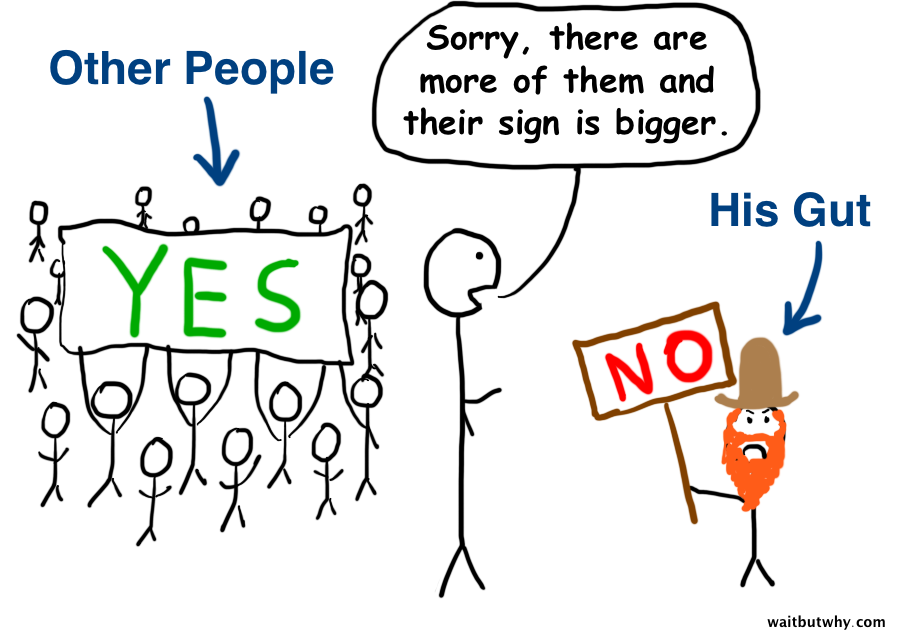
Externally-Influenced Ed lets other people play way too big a part in the life partner decision. The choosing of a life partner is deeply personal, enormously complicated, different for everyone, and almost impossible to understand from the outside, no matter how well you know someone. As such, other people’s opinions and preferences really have no place getting involved, other than an extreme case involving mistreatment or abuse.
The saddest example of this is someone breaking up with a person who would have been the right life partner because of external disapproval or a factor the chooser doesn’t actually care about (religion is a common one) but feels compelled to stick to for the sake of family insistence or expectations.
It can also happen the opposite way, where everyone in someone’s life is thrilled with his relationship because it looks great from the outside, and even though it’s not actually that great from the inside, Ed listens to others over his own gut and ties the knot.
Shallow Sharon
Shallow Sharon is more concerned with the on-paper description of her life partner than the inner personality beneath it. There are a bunch of boxes that she needs to have checked—things like his height, job prestige, wealth-level, accomplishments, or maybe a novelty item like being foreign or having a specific talent.
Everyone has certain on-paper boxes they’d like checked, but a strongly ego-driven person prioritizes appearances and résumés above even the quality of her connection with her potential life partner when weighing things.
If you want a fun new term, a significant other whom you suspect was chosen more because of the boxes they checked than for their personality underneath is a “scantron boyfriend” or a “scantron wife,” etc. I’ve gotten some good mileage out of that one.
Selfish Stanley
The selfish come in three, sometimes-overlapping varieties:
1) The “My Way or the Highway” Type
This person cannot handle sacrifice or compromise. She believes her needs and desires and opinions are simply more important than her partner’s, and she needs to get her way in almost any big decision. In the end, she doesn’t want a legitimate partnership, she wants to keep her single life and have someone there to keep her company.
This person inevitably ends up with at best a super easy-going person, and at worst, a pushover with a self-esteem issue, and sacrifices a chance to be part of a team of equals, almost certainly limiting the potential quality of her marriage.
2) The Main Character
The Main Character’s tragic flaw is being massively self-absorbed. He wants a life partner who serves as both his therapist and biggest admirer, but is mostly uninterested in returning either favor. Each night, he and his partner discuss their days, but 90% of the discussion centers around his day—after all, he’s the main character of the relationship. The issue for him is that by being incapable of tearing himself away from his personal world, he ends up with a sidekick as his life partner, which makes for a pretty boring 50 years.
3) The Needs-Driven
Everyone has needs, and everyone likes those needs to be met, but problems arise when the meeting of needs—she cooks for me, he’ll be a great father, she’ll make a great wife, he’s rich, she keeps me organized, he’s great in bed—becomes the main grounds for choosing someone as a life partner. Those listed things are all great perks, but that’s all they are—perks. And after a year of marriage, when the needs-driven person is now totally accustomed to having her needs met and it’s no longer exciting, there better be a lot more good parts of the relationship she’s chosen or she’s in for a dull ride.
___________________
The main reason most of the above types end up in unhappy relationships is that they’re consumed by a motivating force that doesn’t take into account the reality of what a life partnership is and what makes it a happy thing.
So what makes a happy life partnership? We’ll explore in Part 2 of this post.
[Sources at the bottom of Part 2]
The post How to Pick Your Life Partner – Part 1 appeared first on Wait But Why.
What Does Your Work Truck Say About You?
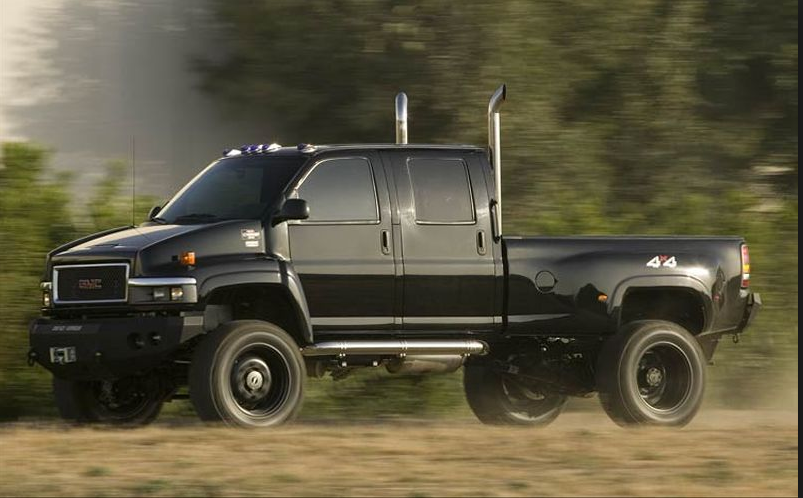
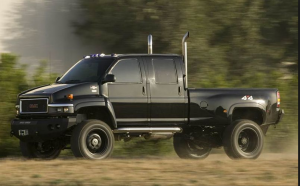 To my Brothers of the construction trades, the oil industry, the armed forces, and even plain old civilian office jobs.
To my Brothers of the construction trades, the oil industry, the armed forces, and even plain old civilian office jobs.
I was hoping it wouldn’t come to this, because I think we should all be free to make our own choices. But with the recent oil boom and bust, and the even bigger housing boom we are just starting to roll with here in the ‘States, there’s a big chunk of your money at stake, and I’d rather see you hold onto it instead of seeing it go up in smoke. So I’m just going to put this out there nice and clear:
Your Work Truck is Killing You, and making you look like a Big Dumbass in the process.
Now don’t get me wrong – not every work truck is a money-burning rolling clown circus with a 24/7 fireworks show shooting out of its roof telling the world how dumb you are. Only about 99% of them. So if you’re fortunate enough to already be in that top 1% who knows how to buy and operate a real work truck, you can just laugh along with me and then share the lesson with our other Brothers* when you get out of class.
“So what’s wrong with my truck?”
I know how you feel – trucks are fun, and everybody has ’em. How could this be wrong? To figure it out, let’s review the basics of what a truck is really supposed to accomplish.
- To make you money.
- To make you look good in front of other people.
You could get more complicated and start talking about horses and cupholders, but if you break it all the way down, those two points above are why we buy trucks.
You could say a truck needs to carry you and your crew to work, or haul your tools, materials and trailers. But why are you delivering yourself to work? Why are you bringing the tools and materials in the first place? To make money. These machines are business tools, designed to make us a profit.
And you could pretend a truck is only a business tool, but that would be ignoring the fact that your choice of truck says something about you – to the ladies, to other men, and to your employer. Or if you’re doing well, to the customers of the business you own yourself. What message do you want to convey to these people?
So Where’s the Problem?
The problem arises when you don’t understand the Two Commandments of Truck Ownership, and buy yourself something that doesn’t really meet those goals.
The Money

Look at this truck, compared to the one at the top of the article. Which guy would you rather hire to build a foundation for you?
A truck makes money by carrying as much shit as possible, safely, to your destination. This allows you to earn a good day’s pay. But the truck also costs you money, which is taking back a portion of that paycheck. The amount you get to keep for yourself is your profit. Since your goal is a nice fat profit, you obviously want to pick the truck that burns the smallest amount of your hard-earned cash.
The Looking Good
But you also want to enjoy the driving, right? You want good handling, a comfortable interior, and you want other people to see how well you are doing. Maybe some flashy accessories and huge off-road tires, because hey, why wouldn’t you want to give your truck superpowers?
And this is the downfall of most truck-owning men. Because a truck that makes you a lot of money, and a truck that handles and accelerates (or climbs 45 degree boulder fields) and has the comfort of a car, are two completely opposite things. In fact, they are so far apart, that the more flashy and comfortable your truck becomes, the more obvious it becomes that you are not using it to make money.
In other words, you are telling the world you’re a big fake. Or at least that you’re too dumb to know the difference. Neither of these is a very impressive message to send.
How to Choose The Right Tool for the Job
So now we know a truck is a tool. It’s a tool for carrying heavy shit, and making money. We can take the emotions of vehicle ownership out of it by just comparing it to a drill.
When I need to make a small, precise hole in something, I’ll grab my smallest drill – currently this little Ryobi 18V deal. It’s the perfect tool for the job: lightweight, plenty tough as I’ve built quite a few houses with these things, and it only set me back about 50 bucks.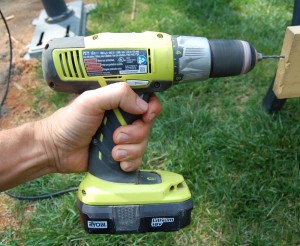
Of course, sometimes you need more power. To drill through a concrete foundation, I use this hammer drill. It does stuff the little cordless could only dream of, but in exchange it is so big you have to angle it properly to even carry it through a doorframe.
Then when things get really tough, I use the drill press. I have a Ridgid 15″ machine, which is the largest one I could find. With this thing, I can drill 50 half-inch holes through half-inch steel plate without breaking a sweat. On the downside, it weighs 163 pounds.
Now, when I need to drill a few small holes to set some hinges, which of these drills do you think I grab? Of course, I use the little Ryobi.
And yet, when a man buys a 360-horsepower pickup truck and uses it for anything smaller than hauling an excavating machine, this is what he is doing:
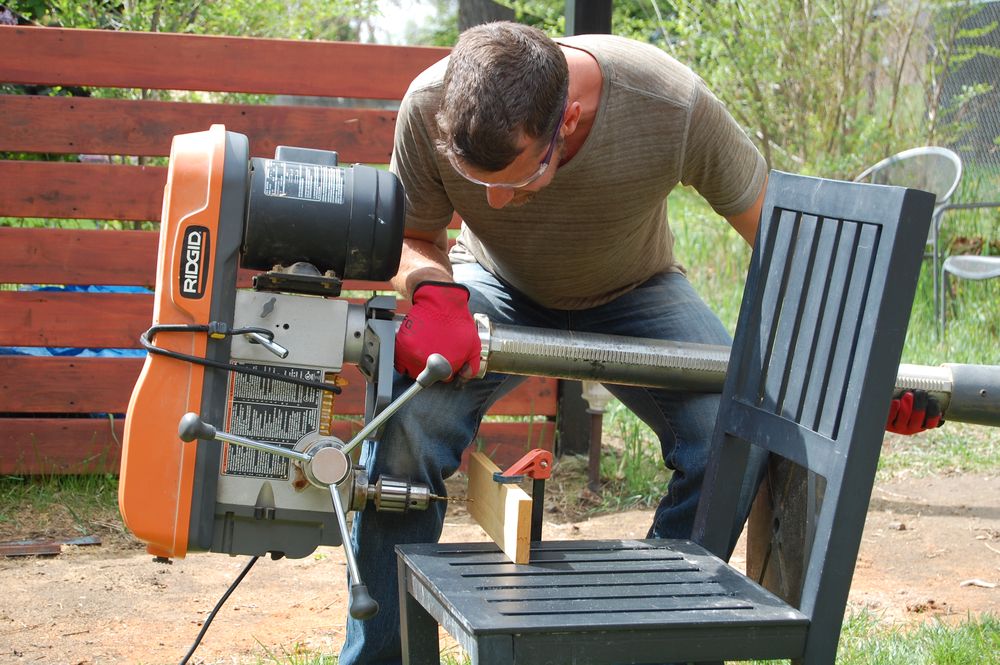
The Wrong Tool for the Job: this is what you are doing, if you use a full-sized pickup truck for anything smaller than hauling multi-ton loads. And I’m not even going to mention the folly of using a pickup truck to commute to an office job. Fuck.
See, when you buy a truck, you look smart only at those moments you are maxing that thing out. Payload and towing load at 100% of rated capacity, 16-foot lumber on the roof rack, and the cabin full to the limits of comfort. At that moment, the truck is earning the money you paid for it. Unfortunately for most gentlemen, this moment is Never.
At all other moments, you’re showing you bought too much truck. You are using the 163 pound drill press to countersink tiny screws in a door frame. You are wasting your own money and looking to the rest of the world like a dumbass who can’t choose the right truck. And unfortunately for most truck owners, this is Always.
For every inch you raise the suspension or every bump in tire size, you’re burning up thousands of your own dollars. For every extra horsepower you have on tap, the story is the same. If you want proof, just look at what the professionals use: real trucks that make millions of dollars for the owners who run fleets of them look like this:
Note the design of this real truck. As low to the ground as possible. Tires designed to roll easily on pavement, because pavement – not dirt – is where you make money. An engine big enough to haul the most profitable load, but no bigger. Fully loaded, these things take well over a minute to get to 65MPH – so why are you paying so much to get your work truck there in under ten seconds?
Sure, motor power is fun. But you know what is much more fun? Money power. Just by making different truck choices, you can end up with hundreds of thousands of dollars in the bank, or invested in your business making more money for you. At that point, your employees will be driving your fleet of slow trucks, while you can kick back with a fast car if you choose to do so.
Examples of Badass vs. Stupid Work Trucks
Now for the fun part of the lesson. All of this makes more sense if we go through a few real-world examples, and explain what they say about the man who drives them.
The Ridiculously Overpriced New Truck:
Trucks like this scream, “I am a sucker for shiny toys and am horrible with my money!”
The new truck market is such a racket. I recently biked by this Ford “Super Duty” at the local dealership, and was astounded at the price. At over $70 grand including tax, this thing is an insane money pit. The depreciation alone in the first year is more than most of its customers actually manage to take home from their jobs. Even if you need to tow 20,000 pounds, you can get an equally useful used truck, a trailer, and a Bobcat or small track-drive excavator to start your landscaping or concrete business for this much coin.
The Jacked up Boy Toy
A truck like this leads a predictable life. It starts out as a ridiculously overpriced new truck (see above). After taking a $50,000 depreciation hit, the original owner trades it for a newer truck with a bigger loan, and a younger man comes in and buys it for $25,000, also on credit. He then spends another $15,000 on customization, making the truck less stable on the highway and the cargo bed even more useless.
Next he blows $15,000 on gas, then eventually runs into money problems and tries to sell it. After months of fruitless advertising, he gives up and lets it go for $9,000, which doesn’t even cover the loan he has on it. He may go bankrupt. Meanwhile, the miniscule 6-foot cargo bed has never carried anything larger than a washer/dryer and a couch, as shown by its immaculate $450 decorator bedliner treatment.
The Millionaire Business Owner’s Workhorse

“I have a successful business, so please step aside as I have shit to do.” The Isuzu standard truck (sold in the US as Chevrolet W4500)
Meanwhile, quietly working in the background while this clown circus goes on are real trucks like this one. Notice how this W4500 (which costs less than a “Super Duty”) does not waste space on any bullshit. Instead of a 14-foot hood and cab up front with a uselessly small cargo bed in the back (all Hat and no Cattle), this truck reverses the ratio. These carry ten times the cargo of American-style pickups, while using less gas and being easier to maneuver into tight spots. You can also get them with dump or box beds, and they will haul a hell of a trailer as well. Depreciation is much slower with these, so you can buy a used one, and sell it many years later for almost the same price if you keep it maintained.
The Future Millionaire’s Truck
If you are earlier in your career or don’t frequently load and unload multi-ton cargo loads with a forklift, you can do very well with a truck like this:
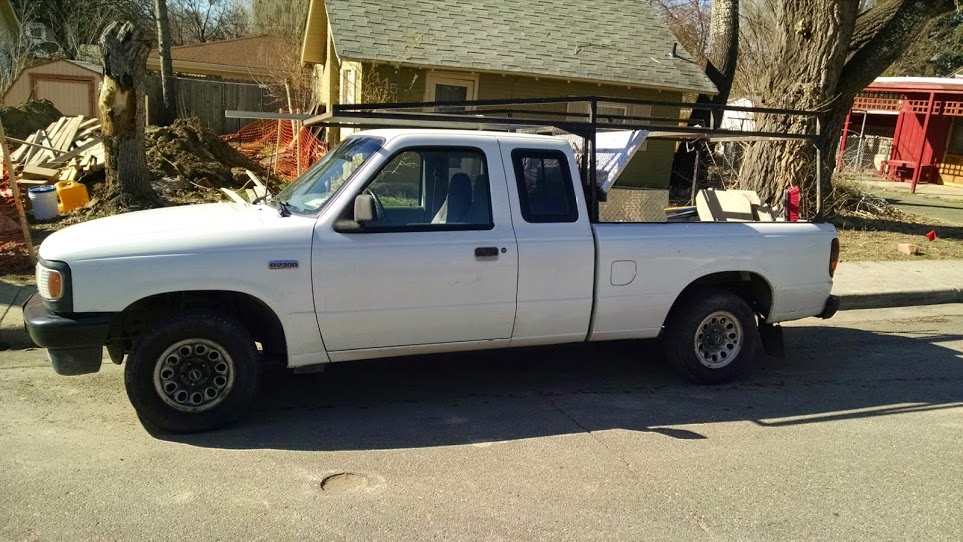
“I generally carry less than two tons, and I like to keep the money I earn from working” – Mazda B2300 or Ford Ranger – ideal work trucks. But avoid the 4-wheel-drive and V-6 engine options. Keep that money for yourself.
This beauty is owned by one of the guys who built the foundation for a house I’m currently helping out with. Note the fully loaded cargo bed and the excellent roof rack. This truck has a 4-cylinder engine, 5-speed manual transmission and will deliver reasonable 30MPG efficiency if you drive it properly. Lower height means easier loading and unloading and better handling. Lower cost (under 5 grand on the used market) means much more money for you.
My own Work Trucks
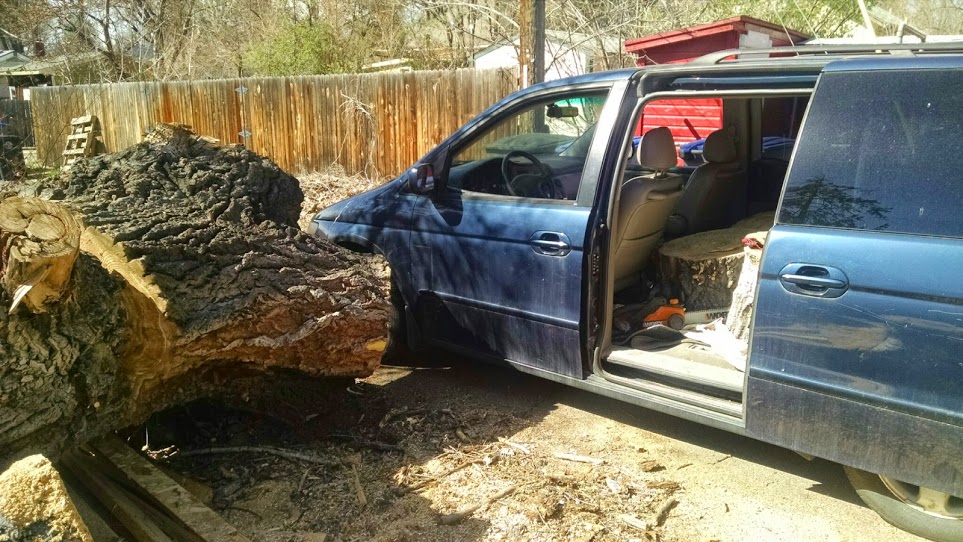
“I think minivans are a ridiculous invention for carrying 60-pound kids, but great inventions for heavy construction work.” Here’s my van collecting 1200 pounds of logs for firewood.
At this stage with plenty in the bank, I have grown soft and have a bit more truck than I need. It’s a 1999 Honda van with 140,000 miles on it. I bought it for $4,800 four years ago, and current market value is maybe 3 grand. Less than what the juniors with no money spend on their wheels and tires alone.
And this thing can work. I have carried over 2,500 pounds comfortably, it can lock up a full selection of tools and keep them dry, and with the seats out you can close the rear door on 12-foot pieces of lumber or a stack of 20 full sheets of plywood. This is the truck I use now, but most of my carpentry career was done with something far less luxurious.
El Amarillo
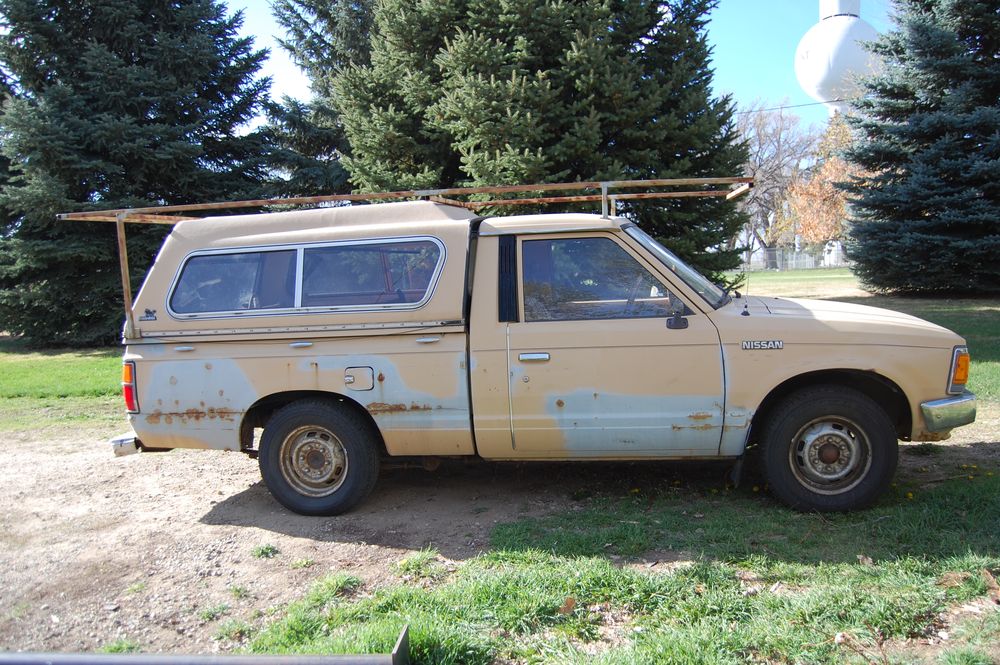
“I live my life to the fullest and waste nothing on silly frills” – The Amarillo – more than enough for 95% of truck users.
Back when money was tighter (I only had $700,000 in the bank but at least my house was paid off), I had this older truck – a 1984 Nissan compact pickup. This thing built multiple houses and kitchens, carried steel girders and landscaping materials, and protected me from weather of all seasons. It has an aftermarket cupholder on the driveshaft hump which is currently full of hardened surf wax and 10 Peso coins.
And I didn’t even own it. I borrowed it for five years (in exchange for upkeep) from a good friend, who had earlier used it to cross the Continental Divide and Death Valley on his way to Mexico’s Baja Peninsula, where the truck served as his beachside home for an extended surfing-based stay.
So heed my advice, men of all ages who are not yet millionaires and wish they were. Your truck may be the biggest obstacle in your way.
The size of your truck is inversely proportional to the size of your wallet. Which one of the two would you rather supersize?
Related Reading (now that you realize you probably don’t need a truck at all):
Turning a Little Car into a Big One
* I speak mostly to men in this article, because they are the primary victims of the pickup truck racket. But women are not immune – they just tend to fall into the “SUV and Minivan” trap more often.
Rent vs. Buy: If You Have to Ask, You Should Probably Rent
Rory GawlerTony, does your math add up? I know you did the calculations...
Four years into writing this blog, I thought I had seen almost everything when it comes to the most common financial suicides committed by the middle class. But today I was hit in the head by a shocking realization:
When choosing between buying versus renting a house or apartment, people are making much, much worse choices than I would have thought possible.
The implications are so striking that logically, some of the world’s busiest stretches of road should not even exist. We could save millions of lives and trillions of dollars by just helping certain people operate a basic hand calculator at a beginner level. It sounds improbable, until you review the following stories from this Canadian vacation I am currently wrapping up:
Case Study One: North America’s Fourth Largest Miscalculation
The City of Toronto is famous as one of the world’s most happening and expensive places to live. With over six million people in the highly car-oriented metro area, it sprawls on forever and people commute in from an insane zoo of connected cities comprising 31,000 square kilometres, or roughly a quarter of the entire land area of England.
There’s only one real highway across this thing, the 401, which has the dubious distinction as busiest and most traffic-jammed highway in the world. Rush hour extends roughly from 3:30AM to 11PM, so I don’t even attempt a crossing except in the 4-hour window outside of that range*.
So what has created this incentive to commute? There are great jobs in Toronto – some of the highest paying in the country. Unemployment is low. The city is clean and quite beautiful along the lakeshore and the many ravines and rivers. But unfortunately, as the saying goes, nobody could ever afford a house there. Average price for a detached residence is up to $1.05 million, and even a car-commuter special runs you $730k. If you don’t have that kind of money, you just follow standard Realtor advice and “Drive ’til you Qualify”.
Mr. Money Mustache Moves to Toronto
For years, I have accepted these prices as a given and told people to either get creative with roommates unless you have secured at least a $400,000 salary, or get the hell out of the whole area as I did. Until I conducted a little experiment in Mustachianism: asking myself “what would I do if I had to move to Toronto myself?”
Let’s assume a worst-case scenario, because if you can prove that it also covers every other situation. Somebody offers me a job in the most expensive and hardest-to reach region right downtown. It’s an a amazing job that I can’t resist and it pays well.
And wanting to maintain my current luxurious lifestyle, I insist on only the best: living in a huge apartment in a brand-new, modern building near the shore with beautiful views, within walking distance of work, the stadium, the train station, and everything else downtown has to offer. No buses or subways for me, and let’s assume I’m not even willing to ride my bike, because hey, it can occasionally get snowy in Toronto and nobody can possibly ride a bike in winter.
So I pull open the useful apartment-hunting site called padmapper.com and set my criteria to unlimited price, insisting on 2 bedrooms and 2 baths, so I can comfortably bring my family along for the ride. I select one of the nicest looking listings at random, because it overlooks a park with floor-to-ceiling windows, has a sweet balcony, granite and stainless kitchen, and heck, there’s even a gym and a rooftop patio on this 40-story building:
This place looks appropriately fancy. A high-end pad in an expensive city’s most desirable district. I brace myself for an astronomical price, because after all, let’s look at the math:
People are commuting 40 minutes from $700,000 houses in the “closer” suburbs. A $700k house costs a minumum of $4,000 per month to operate in this area counting only mortgage interest at today’s amazingly-cheap-but-temporary 2.5%, a 7% opportunity cost of capital in the downpayment, plus property taxes, insurance, heating/cooling and maintenance at 1% annually. Let’s assume you’ve been wise enough to avoid areas with an HOA. 80 daily minutes in a car translates to roughly 900 miles ($450) and 22.5 hours of your time (say, $900) a month, for a grand minimum total of $5350.
All that, just to live near nothing but strip malls and TV-watching suburban commuters. So I’m assuming an apartment like this would list for upwards of ten grand a month. I look at the price.
$2300 per month
Oh, and that includes free heat and an underground parking space
(parking for mere mortal visitors in this area costs about $30/day)
Is this a joke? Are apartments really that cheap? Looking through a few dozen other listings in the prime areas, I realize that yes, they are. And if you’re willing to be really badass and step onto a subway for your morning commute and move down to a less luxurious apartment building, you can find central-Toronto 2/2 apartments for $1200.
Share one of those with a roommate, and you can work a minimum wage job ($11.00/hr) in this city, pay for rent and food, and still save almost 50% of your income, retiring from your job working at Starbucks by age 37.
I repeated the same experiment in Canada’s capital city of Ottawa. Brand new 900 square foot luxury apartment with 9 foot ceilings and two walls of glass overlooking the city’s hottest “Byward Market” district: $1950 per month. And this is in a city where people defy death by driving an hour through a blizzard before paying for parking and heading in to the office. It’s also a city where some people spend $900 per month on their winter heating bills alone (this apartment also includes free heat).
The implication of this is that an amazing majority of the traffic jams, car dealerships and SUV pileups and harried lifestyles and stress-related diseases and obesity that come with a car commuting lifestyle are completely stupid, optional, irrelevant byproducts of our choices. Almost every expensive suburb should not even exist. Every major urban highway should be shut down and converted to gardens and bike paths, with a few solar awnings thrown in – just enough to power the entire city.
So I ran these numbers by a fellow Canadian, expecting full astonished agreement. Instead I got the start of a bizarre set of justifications:
“But people want a back yard. For their kids, or their dogs.”
Are you JOKING?? When you live in a high-end district, ignoring the fact that luxury apartment buildings typically have amazing landscaped common areas, you have literally a multi-billion dollar back yard. The Toronto lakeshore is an endless expanse of beaches, bike paths, fountains, gardens, play structures, volleyball courts, patio restaurants, and of course one of the largest expanses of sparkling blue freshwater in the world. In Ottawa you have a stunning riverfront, forests and parks and bike paths that lead everywhere, and rapid transit that would eliminate any need to ever own a car.
Would you really waste an extra $3,000 per month just so your kids could play on your personal fenced-in postage stamp overlooked by vinyl-clad suburban houses in every direction while you are out stuck in traffic? No.
But what about the dogs?
$3,000 per month, plus the $400 it costs to feed and treat and house and transport and occasionally kennel the a dog, compounds to roughly $588,200 every decade if you invest the money instead. That’s every decade, and they live longer than that. Are you really rich enough to spend a million dollars, and clean up warm squishing chunks of excrement daily with only your bare hand and a plastic bag, just so you can have this extra bit of companionship during your sparse time outside of work? No.
And we haven’t even mentioned one of the biggest joys of renting: unlimited mobility. On a whim you can jump to a new place anywhere in the world. Never be subject to the pain of fighting with buyers in a hot real estate market, or begging for sellers in an icy-cold one.
The lesson? If you live in an area where houses cost more than $300,000, take a close look at the rent prices around the areas you currently drive. Budget your driving costs at at least a dollar per mile (80 cents/km in Canada to account for higher costs) because you absolutely must put a high value on your spare time to get ahead in life. Doing the math on life decisions like this was by far the biggest factor in my own early financial independence.
Buying a house is a great thing to do when you’re settling down in a beautiful, affordable spot right near everything you need to do for the next ten years. And if your schedule and temperament allow some time for a good several hours a week of maintenance work. But for the rest of us, it’s worth having another look at Rent vs. Buy.
Further Reading: The New York Times has a pretty great Rent vs Buy Calculator that covers many bases and includes some nice conservative default assumptions (except I’d personally assume higher than 4% investment returns and less than 3% property price appreciation in expensive markets where the price-to-rent ratio is out of whack, such as those in this article). Also, many areas have property taxes higher than the default.
The biggest difference between NYT and MMM is just the focus on location. Rentals often dominate the market in the most expensive and walkable areas, so if you want to work and live in such a place, it might make sense to go straight to the apartment buildings.
*Luckily we have now switched to taking the VIA – here’s a video I took out the window of the train traveling at 150 km/hr past a line of car commuters stuck in the usual jam leaving Toronto. This train is both faster and (usually) cheaper than driving a car the 450km from Toronto to Ottawa, which reveals a few hundred million more dollars of savings available, since thousands of people make this drive in any given week.
The St. Paul’s Rape Case Shows Why Sexual-Assault Laws Must Change
Rory GawlerGlad to see NH ahead of the game in some ways at least.
